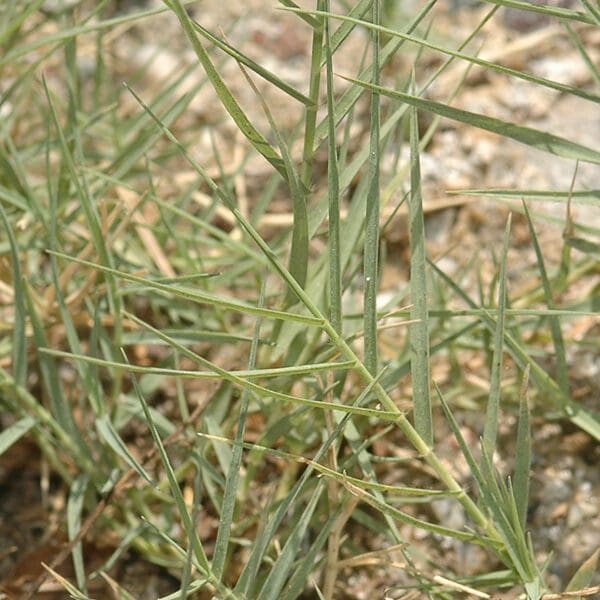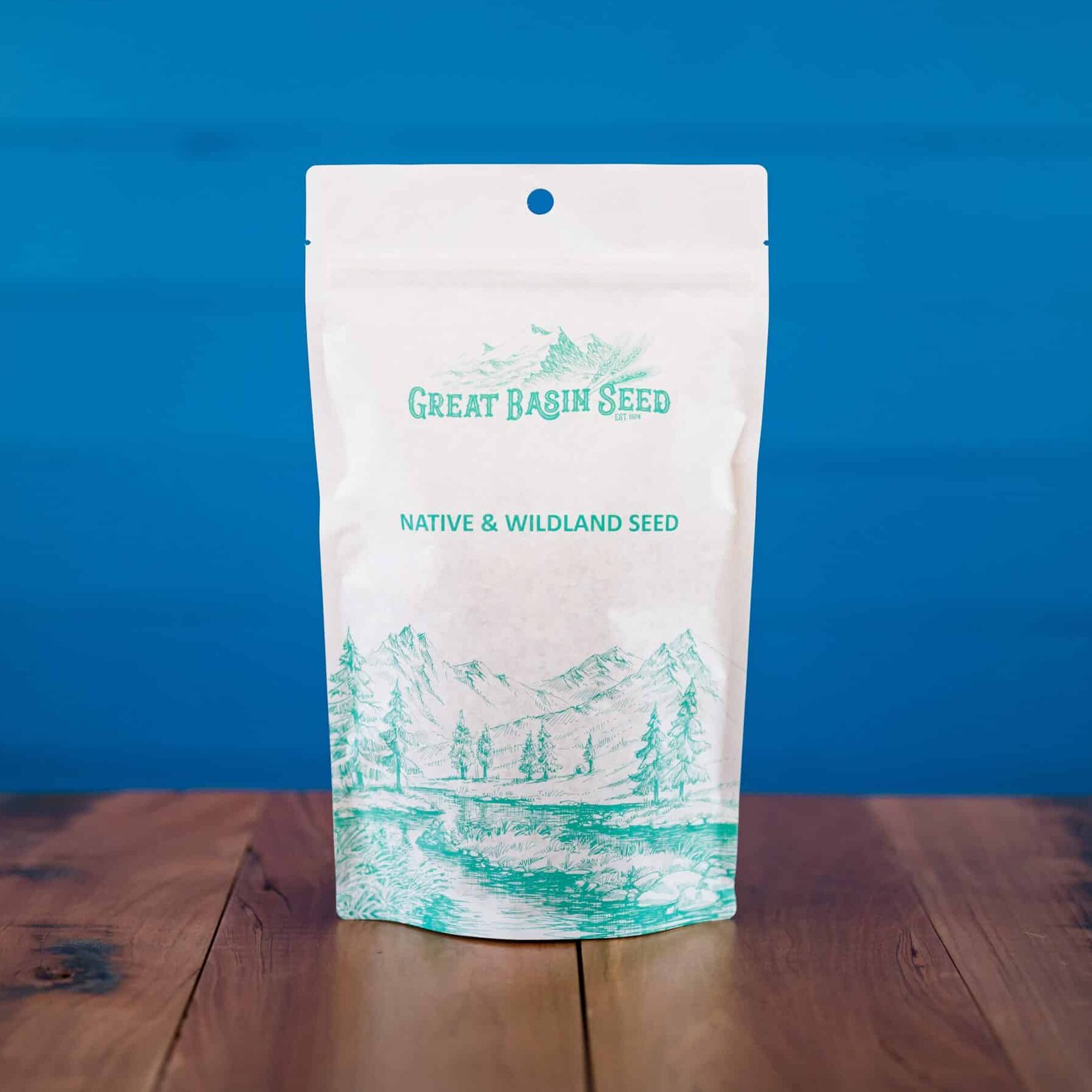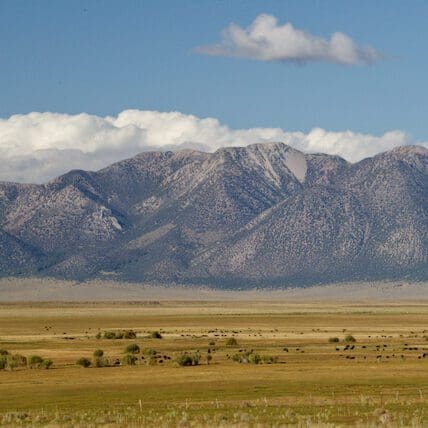Inland Saltgrass (Disticlis spicata)
Also known scientifically as Disticlis spicata and commonly as Alkalai Saltgrass. Inland Saltgrass (Disticlis spicata) is a highly rhizominous grass, producing long, hairy, sharp pointed, coarse, shoots. It grows from the low valley bottoms to the middle sagebrush grass zone. It is most common in wetlands associated with broad, flat valleys and basins, in swales, on the margisn of ponds, lakes and reservoirs, and in seepage areas. The elevation range is between 2500 and 6000 feet, and rainfall from 8 to 14 inches. It is quite resistant to fire and trampling.
Inland Saltgrass has several interesting adaptations to its habitat. Salt glands on the leaves extrude salt, allowing the plants to utilize salty water. It can survive flooding and heavy saturated soils if the leaves are exposed to air, allowing air to be moved from the leaves to the roots through a series of interconnected passages. The sharp-pointed scaly rhizomes effectively push through heavy clay soils, allowing saltgrass to colonize areas less favorable for seedling establishment. It occupies primarily extremely salty and alkaline soils that are poorly drained and have a high water table. It is commonly associated with Alkali Sacaton and Greasewood.
Saltgrass is of low palatability for livestock and big game, receiving use only after other forages have cured in the late summer. Saltgrass can provide important benefits in livestock management. It is one of the most resistant grasses to trampling and grazing, providing soil stabilization in areas of trailing and water developments. Small mammals and birds use saltgrass for cover, nesting, as well as eating the rootstocks and seeds.
It is very tenacious as a soil erosion control plant, but is usually not found where erosion is a problem. It also has some value in slowing the overland flow of water and reducing the salinization of fresh water streams.
Native Americans in Nevada and Utah used saltgrass as a cereal crop. Also known as Alkali Saltgrass.
***Click on the “Quick Plant Facts” tab above for more information.
Saltgrass NRCS Plant Fact Sheet
Saltgrass NRCS Plant Fact Sheet
PDF version of NRCS Plant Guide & Fact Sheet
Prepared By: William Skaradek USDA NRCS and
Christopher Miller, USDA NRCS Cape May Plant Materials Center
Species Coordinator: Christopher Miller
Helpful Links
Additional information about this product can be found on the academic websites linked below.
Synonyms
Many plants have more than one common and scientific name. We've listed a few of them below.
- Inland Saltgrass
- Distichlis spicata
- Seashore Saltgrass
Who is Great Basin Seed?
Great Basin Seed is a seed company that specializes in seed sales and consultation for home, ranch, farm, range and reclamation. We have been a leader in the seed industry since 1974.
Our History
We've been in the seed business since 1974.
What We Offer
We offer seed for home, farm, ranch, range and reclamation projects.
Meet the Gang
We have the best employees in the world! We are proud of the work they do, and trust them to serve you!
Right: Company founder Lloyd and his wife Paula Stevens in a wildflower seed production field circa 1977
Quick Plant Facts
| Common Name: | Inland Saltgrass |
|---|---|
| Scientific Name: | |
| Old Scientific Name: | |
| Lifespan: | |
| Origin: | |
| Plant Type: | |
| pH Tolerance: | |
| Seed Count | 518,000 seeds/lb. |
| Growth Height: | |
| Root Form | Sodformer |
| Sowing Rate | 4-10 PLS lbs. per Acre |
| Min. Precipitation | 8 Inches Minimum |
| Best Sowing Time | Late Spring or Summer |
| Max Sowing Depth: | |
| Growth Season: | |
| Sun & Shade Tolerance: | High Sun, Shade Intolerant |
| Plant PDF File | dist.pdf |
| Zone Map | comingsoon.gif |
| Hardiness Zones: | |
| Select a Package Size and Quantity | 8 oz. Pouch (0.50 lbs.), 1 lb. (by the pound) |








